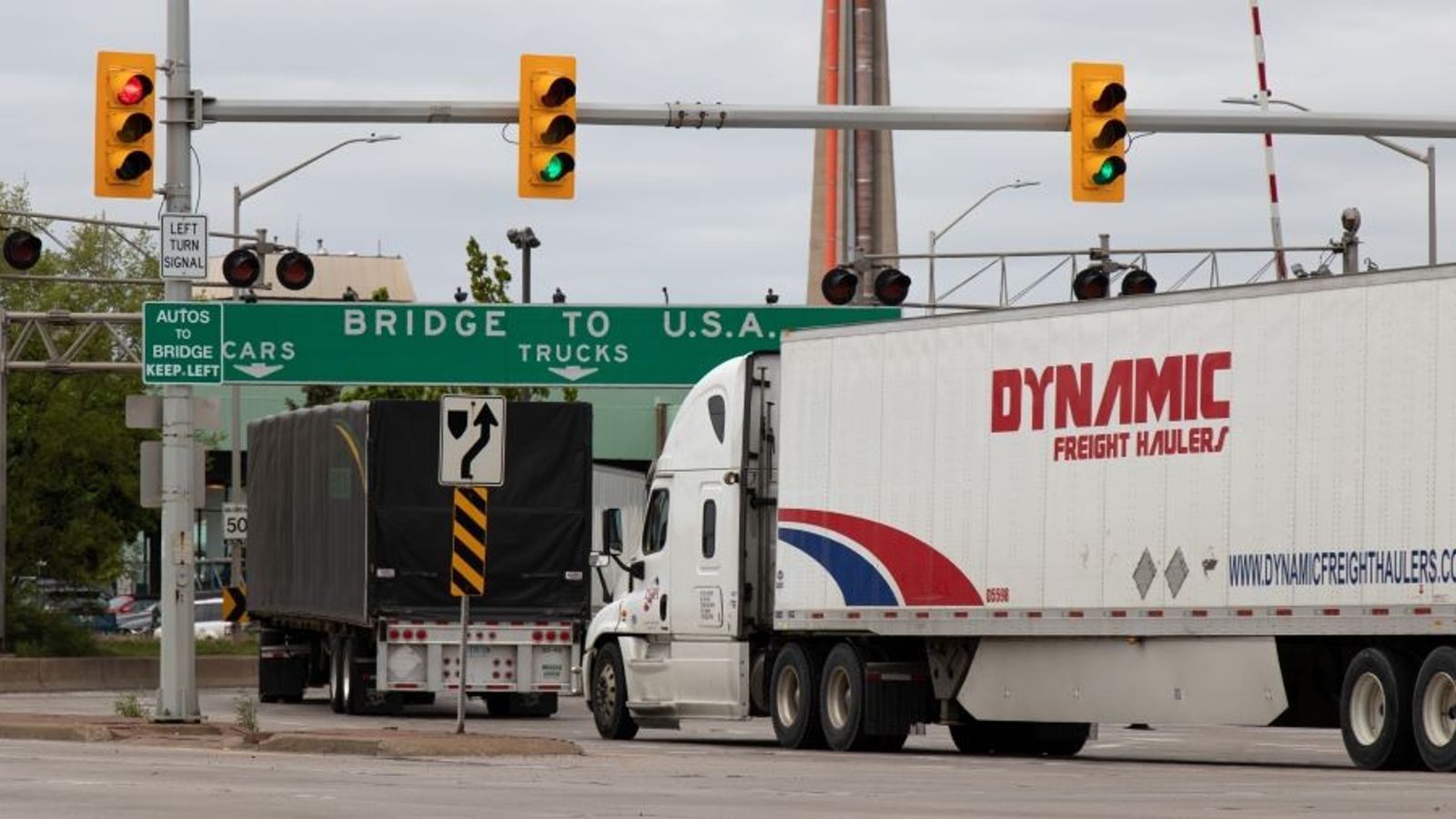
Cross-border supply chains are being tested and reshaped as US importers rush to bring goods into the US before 25% tariffs on all Canadian and Mexican goods take full effect Wednesday, along with an unknown number of potential global “reciprocal”tariffs.
US importers and exporters are feeling the impact of those tariffs already in the form of rising cross-border transportation costs, disrupted supply lines, and in some cases, broken relationships with suppliers and customers on the other side of the US border.
On the US-Mexico border,“there's definitely been a sense of panic yesterday and today,”Jordan Dewart, president of Redwood Mexico, part of third-party logistics provider (3PL) Redwood Logistics, told the Journal of Commerce Tuesday.“We are seeing a really big push to get goods across the border today.”
That push has been building over the last two weeks, similar to the push or pull-forward of goods before the original March 4 deadline for the US tariffs on Canada and Mexico.
Leading up to Wednesday, only 51% of Mexican and 62% of Canadian goods have been subjected to the tariffs. That is slated to change on April 2, when 25% duties will be placed on all imports from the two largest US trading partners, except for some energy products.
Cross-border freight at ports of entry such as Laredo in Texas screeched to a halt March 4 but then gathered speed after the White House delayed tariffs on goods that complied with the US-Mexico-Canada trade agreement's (USMCA's) North American content standards until April 2.
“We fully expect a hold [by shippers] on crossings at the Mexican border Wednesday and potentially a longer holding pattern depending on whether the tariffs stick for a longer period,”Dewart said. Shippers can expect added delays at border crossings.
“Cross-border shipping is a highly orchestrated and complex process that requires preplanning of inbound southbound capacity to meet northbound demand,”Dewart said.“These situations really create a massive bottleneck on either side of the border.”
The 25% tariff on Mexican and Canadian goods looks increasingly like the tip of a much larger iceberg, including perhaps a universal tariff covering all US imports. President Donald Trump is expected to make an announcement on reciprocal tariffs Wednesday.
“It's unclear whether tariffs on goods from Mexico might be reassessed, whether the current exemption for USMCA-compliant goods might expire or how soon the new tariff on auto parts will go into effect,”said Mike Burkhart, vice president of North America surface transportation at logistics provider C.H. Robinson Worldwide.
The tariff threat has tightened capacity across C.H. Robinson's network of more than 1,000 Mexican trucking companies,“as customers hedge their bets,”by bringing more goods to the border, Burkhart said.
Dewart said many shippers are playing a“wait-and-see”game, holding inventories at the border or“in-country,”a strategy he said is not sustainable in the long term.
“Some smaller companies have even said that if tariffs go into full effect, their model will just not work and they will have to rethink their entire business,”he said.
Overhauling supply chains
That“rethink”is already happening at many companies, according to Paul Brashier, vice president of global logistics at 3PL ITS Logistics.
“This is having a pretty large effect on North American supply chains,”Brashier told the Journal of Commerce Tuesday.“We've seen a lot of projects involving Mexico and Canada put on the back burner. You're going to have complete supply chain overhauls.”
Brashier has already seen annual contracting plans change radically due to the tariffs.
“Usually at this time of the year we're buttoning up [requests for proposals] and going into new contracts, but now we're seeing a lot more second-quarter redesign, repricing and minibids,”he said.
ITS Logistics has been grabbing all the southbound truck capacity it can over the past month to get trucks to the US-Mexico border to move northbound loads, Brashier said. But that's difficult as northbound loads can outnumber southbound loads by four to one.
Overall, the US freight market is still soft, despite the pull-forward of freight ahead of tariffs.
“The change in the flow is what's creating all the work,”said Brashier.“While there's plenty of supply, we're changing tack and changing the way capacity moves.”
The US has seen an increase in flatbed truck demand linked to tariffs, with spot flatbed volumes and rates soaring in recent weeks.
Canadian capacity strained
On the northern US border, truck capacity is scarcer than it used to be.“Tariff uncertainty is impacting carrier supply in Canada,”Burkhart said.
“Elevated spot prices have provided short-term opportunities for carriers, but for some, that hasn't offset the disruption of long-standing cross-border trade flows,”he said. As a result, some motor carriers are downsizing, further limiting available capacity.
Spot rates in lanes from Canada to the US have been elevated much of this year, rising as much as 75% in some cases, driven by high cross-border volumes.
As of April 1, dry-van spot rates in the busy Toronto-to-Chicago spot truck lane are 20 cents higher in a seven-day rolling average at $1.81 per mile, excluding fuel, than the March average rate of $1.61 per mile, according to DAT Freight & Analytics.
Toronto-to-Chicago dry-van spot rates are up 25% from January. Rates from Chicago to Toronto, also excluding fuel, climbed from $1.45 per mile in December to $2.01 per mile in March but are down to $1.71 in a seven-day rolling average as of April 1.
Other supply chain constraints are cutting into available truck capacity in Canada.
“For the past several weeks, rail congestion has significantly impacted intra-Canada long-haul capacity,”Burkhart said.“As a backup of container ships at many ports and rail backlogs persist, more shippers are turning to full truckload to mitigate delays.”
That's placing additional demand on an already constrained market and creating upward pressure on truckload rates, he said.
That upward pressure could flip after tariffs are implemented and higher costs dampen consumer demand, which already appears to be falling.
“I see this as similar to a peak produce season,”Brashier said. “It's short-lived until inventory either gets right-sized or new sourcing patterns come into play.”

